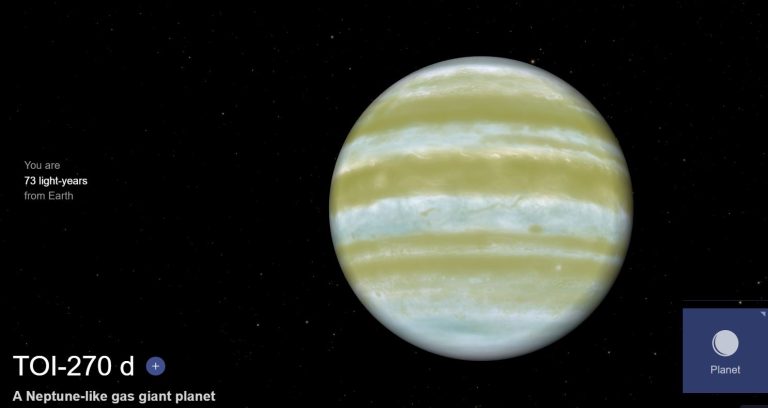Unveiling TOI-270 d: A Waterworld or a Boiling Hell?
TOI-270d is a Neptune-like exoplanet discovered in 2019 orbiting an M-type star. It has a mass equivalent to 4.78 Earths, orbits its star at a distance of 0.0721 AU, and takes 11.4 days to complete one orbit. This discovery was made using the transit detection method.
In the vast expanse of the cosmos, beyond the confines of our solar system, lies a fascinating discovery that has captured the attention of astronomers worldwide. The unveiling of TOI-270 d, an exoplanet shrouded in mystery and intrigue, has sparked heated debates and ignited imaginations about the potential for habitable worlds beyond Earth.
Unraveling the Enigma
The discovery, facilitated by the powerful James Webb Space Telescope (JWST), unveils a celestial body with characteristics reminiscent of a science fiction tale. Located approximately 70 light-years away, TOI-270 d presents a tantalizing prospect: a planet potentially cloaked in a vast, boiling ocean. The presence of water vapor and chemical signatures of methane and carbon dioxide in its atmosphere hints at a world where liquid water might dominate the landscape.
Dueling Interpretations
However, as with any scientific endeavor, interpretations vary, leading to a clash of theories among researchers. While some advocate for the notion of a “hycean” world, where a scorching ocean coexists beneath a hydrogen-rich atmosphere, others argue for a more hostile environment. Canadian astronomers propose an alternative perspective, suggesting that TOI-270 d might be a rocky inferno, with surface temperatures soaring to a blistering 4,000 degrees Celsius.
The JWST’s Revelations
Despite the discord, one thing remains clear: the James Webb telescope’s unprecedented capabilities have revolutionized our understanding of distant worlds. By analyzing starlight filtered through exoplanet atmospheres, astronomers can glean invaluable insights into their compositions and potential habitability. The intricate dance of chemical elements offers a glimpse into the conditions that prevail on these distant shores and the tantalizing prospect of life beyond our solar system.
Challenges and Possibilities
The enigmatic nature of TOI-270 d presents both challenges and opportunities for scientific inquiry. Tidally locked, with one side perpetually facing its star while the other languishes in eternal darkness, the planet embodies extremes that defy conventional wisdom. Yet, amidst the adversity, hints of habitability emerge, offering a beacon of hope for astrobiologists eager to uncover the secrets of extraterrestrial life.
Looking Ahead
As we embark on this journey of cosmic exploration, it is imperative to tread carefully and approach each revelation with cautious optimism. Further observations and meticulous analysis will be essential in unraveling the mysteries of TOI-270 d and similar exoplanets. The quest to understand our place in the universe compels us to push the boundaries of knowledge, fueled by curiosity and the relentless pursuit of truth.
HASHTAGS:
#Exoplanets #Astronomy #SpaceExploration #JamesWebbTelescope #Astrobiology #CosmicDiscovery #TOI270d #HabitableWorlds #ScientificResearch #BeyondEarth

